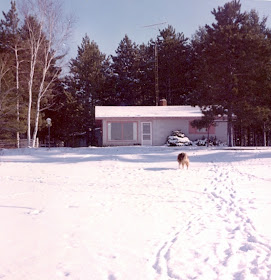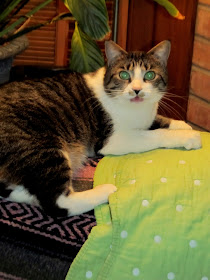Back when I was doing my posts on our trip to Paris, the Netherlands and London, there were several people who asked why I didn't post about the Anne Frank House in Amsterdam -- especially since I mentioned it was on my "must do" list.
There are three reasons for that. First, those Europe posts, while fun for me, were getting awfully long. And, I wasn't quite sure how to make it fit with the others, since no photos were allowed in the Anne Frank House. It would take some prepping.
But most of all, I found it moving in a way that was difficult to process and I just wasn't sure how to go about it.
But time, of course, puts things into perspective, so back to Holland we go.
Rick and I were more fortunate than we knew to make reservations for the Anne Frank House so close to the time we would visit (Two days before--and there were precious few times from which to choose). This may be one of the biggest attractions in Amsterdam and because of the size and cramped quarters, only a certain number of people are admitted at a time. The lines can be quite long. (If your travel plans are quite certain, you can make reservations well in advance online.)
The house is located on one of Amsterdam's many canals. In the photo above, you can see it next to the house with the "step" roof. Below is a closer view.
It is an easy walk from the Centraal Station, about 20 minutes, and also near a tram stop.
After you enter, one is reminded that the "House" was actually the business establishment of Otto Frank and the first spots you see are the offices from the company. There are a couple of diaramas showing how things were laid out and some memorabilia.
The really emotional stuff begins when you go behind the bookcase that bloked the narrow stairway up to the rooms where the Frank and Van Pels families stayed, along with their dentist friend, Fritz Pfeffer (Mr. Dussel).
There is no furniture. If you see postcards otherwise (and there are some) they have been staged for the guide book. So, in a way, one doesn't get the sense of how cramped it would be -- except for the fact that in your group there are more than eight people walking around -- and there isn't a lot of room to walk.
The only room that is somewhat decorated is Anne's -- the movie star photos she collected are posted on the wall, much in the way one would thing she had done as a young girl.
To me, one of the most moving spots was the attic where Anne and Peter would sit and talk, fall in love, and look at a piece of sky. The house is very near the Westertoren church where they would listen to the bells.
It surprised me -- and it shouldn't have -- that the house is across the street from one of the many canals that snake through Amsterdam. I don't remember mention of this in the diary, but it has been a long time.
And, just down the block is the Westertoren.
You can see how close it is to the gift shop (the glassed building attached to the house in the photo below)
After one leaves the living quarters, you visit a museum of sorts. There are video monitors with interviews of those who had known Anne, including Miep Gies, one of those who helped keep them safe for so long.. Some of these stories are very sad indeed.
The original diary is not present but other diaries are mocked up to look the same and one can see pages of writing by Anne and many photographs.
You can also see the SS Records after the group was arrested. There are also many photos from the Frank's personal collection and information on how each of those who died perished.
When one leaves the archival part of the house, there is yet another area -- one that brings the issues presented in the book and on the tour to real and contemporary life. Videos present questions and ask how you would handle. People can vote individually and sometimes the results are a bit disarming.
I think the museum does a disservice to itself in not recreating the space more authentically. A bunch of empty rooms don't do it for the uninitiated. But the displays are excellent and I'd put it at the top of the list for anyone, particularly one who knows and cares about Anne Frank's story, to visit.
I was extremely moved by the Anne Frank House. Maybe it was reading the book so often, or so many books about her family and their protectors over time. Maybe it was having worked on or in three productions of the play and seeing the movie any number of times. Rick was less so.
"Why Anne Frank?" he asked, when so many died. How did her hiding place become the big tourist attraction that it is?
It's a tough question -- and a good one. Clearly there were many who died or who were brave in their resistance to the Nazis.
But the way I see it is that here was one girl -- one of the innocents, like so many innocent children. She lived in the hardest of worlds, in conditions no one should experience, for reasons which are unspeakably deplorable.
She wasn't the only one by any means. But she was the one with a voice, the one who despite everything still believed that people were really good at heart.




















































